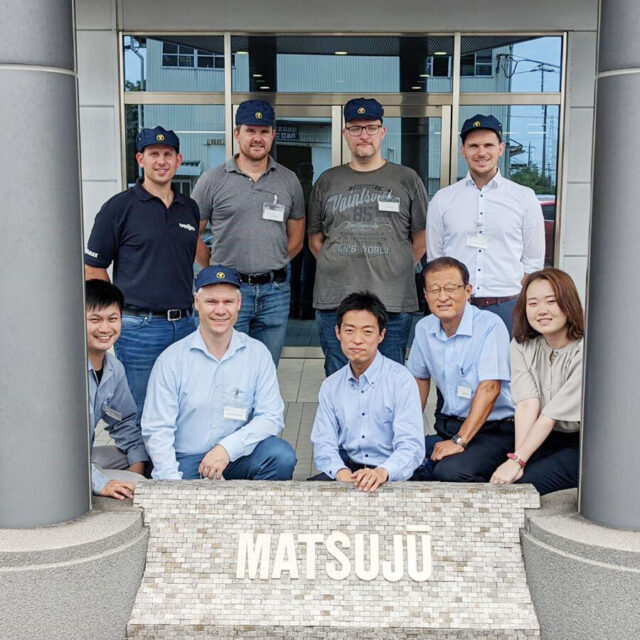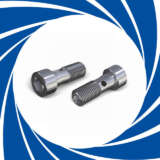On a mission
to achieve
clean flow
Its name is Bolt. Banjo Bolt. And just like the world’s most famous secret agent, this bolt works under cover. Thanks to its hollow shaft, the banjo bolt is used wherever fluids or gases must flow into or out of a component from a tubing system. Now a cross-divisional team has revamped the production process in an effort to reduce costs and improve quality.

Banjo Bolt is used in PSA 3-cylinder engines, such as in the Opel Corsa, Peugeot 208, Citroën C4
Banjo Bolt properties
- Range of dimensions: M10 to M14
- Thread pitch: 1.0 to 1.5
- Bolt length: 17 mm to 40 mm
- Transverse holes: One-hole and two-hole versions; hole diameters range from 2 to 7 mm
- Material properties: based on customer requirements
KAMAX already produces and supplies more than one million banjo bolts a year. Their uses range from feeding oil into turbochargers to connecting brake lines to brake calipers. While this might sound straightforward, these applications entail risks: with the standard production process, borings are sometimes left behind in the bolt cavity. These borings are created when the cold-forming process is followed by axial drilling, and one or two small holes are drilled into the side to allow fluid to flow into the shaft. These borings can become stuck inside the bolt, leading to subsequent difficulties in the vehicle. If this should happen in the turbocharger, for instance, engine performance can decline drastically. The result: complaints, dissatisfied customers, and expensive repairs.
The holes are punched from the outside into the shaft
The banjo bolt receives its winding with a planetary roller
Making borings a thing of the past
Now the Technology and Business Development team has revamped the process and worked with the Japanese company MHI (Matsumoto Heavy Industries) to develop our own, cuboid machine that is approximately two meters in length. The goal: to improve quality and reduce costs. Before the first step is taken in the new machine, in the upstream cold-forming process a bolt blank is produced with a deep indentation so that the center of the shaft is hollow. Once this has been done, the holes are punched through to the cavity from outside in the new machine. The punched material is then sucked out.
After this, the banjo bolt is placed in a planetary roller where it is threaded, before being automatically inspected by cameras in the final step. Florian Heine, European Director of Application Technology, explained: “This allows us to eliminate two process steps – which naturally reduces costs. At the same time, we are able to supply a product that is less prone to faults because no borings are left behind. This makes our products especially attractive to customers.”

The KAMAX Team with obligatory safety hat in Japan visiting MHI.
MHI manufactures the types of tubing via which banjo bolts are connected to components. The company also produces screws, and it specializes in metal punching. KAMAX’s Japanese sales office established contact with the company.
Japanese adventure
Heine and his colleague Christoph Haust at the Homberg plant had this to say about the collaboration with MHI: “We were working with an engineer who did not speak either German or English, so we had to work through a translator for everything. While this was not a problem for simpler issues, dealing with details was rather challenging.” One thing that helped was working with pictures, because these could be understood without words.
Preparations are currently underway to begin production using the new machine, and the employees are now being trained for this step. This will also entail a change of location. When the new process is launched, banjo bolt production will be transferred from its current location in Osterode to a facility in Homberg. A KAMAX delegation – including machine operators – has already traveled to MHI in the Hiroshima region in order to approve and take possession of the machine. While at the factory, “safety caps” were an important item – to keep oil out of their hair.
KXpress















